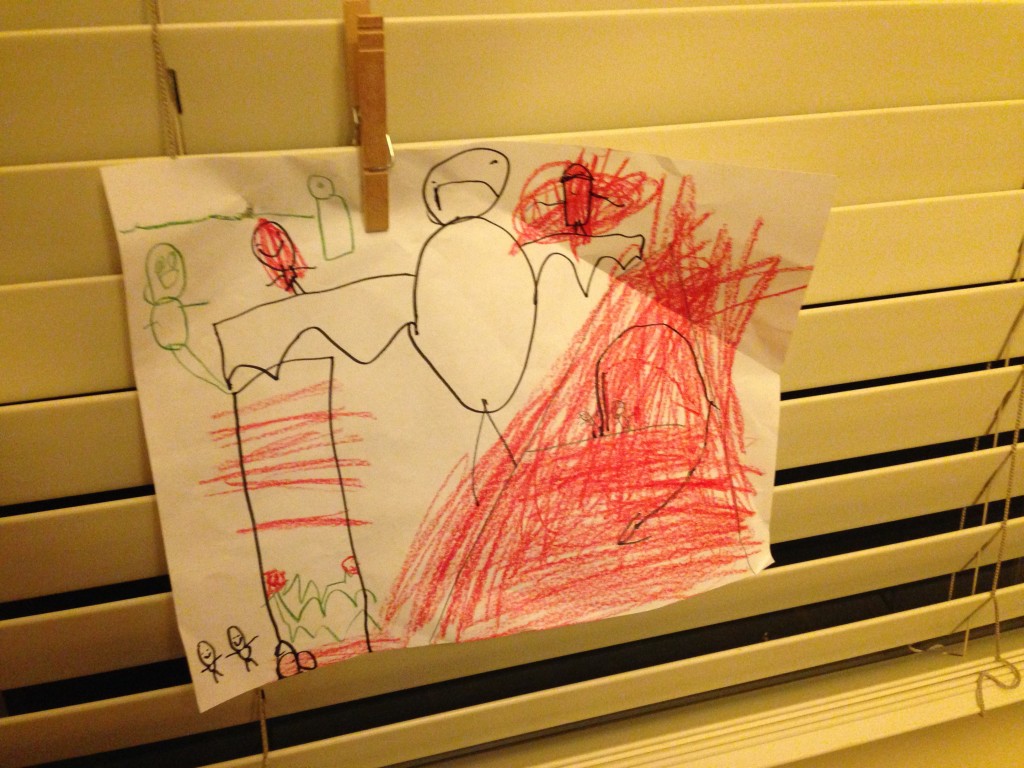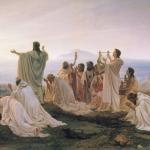Dear Readers,
About a month ago, the Builders were asked to write a review of Thomas Groome’s latest book entitled “Will There Be Faith: A New Vision for Educating and Growing Disciples.” I decided that I was up to the task, and received a free copy of Groome’s book from the publisher. I have read the book and compiled my thoughts into a book review below – enjoy!
I have just finished reading Thomas Groome’s newest book, Will There Be Faith?, and my first reaction is that perhaps the last chapters of his book should have come first, with the remainder of the book following! Thomas Groome is a scholar, and clearly possesses a lot of knowledge about the Catholic faith. Throughout his book, he often quotes Scripture, the Catechism of the Catholic Church, the saints, particularly St. Thomas Aquinas and St. Augustine, and other religious scholars. It is quite clear the Professor Groome does not want to leave any stone unturned, or any subject unexplored, and thus he goes into great detail with each topic. As someone who appreciates scholarly pursuits, I very much appreciated Professor Groome’s in-depth discussions; as a mother and religious educator, I sometimes felt that his main ideas were lost amidst the myriad of Scriptural references, saint quotes, and academic tangents found throughout the book.
Professor Groome spends the first 259 pages of his book laying the foundation for his life to Faith to life approach to religious education, and the last 78 pages explaining this approach and giving practical suggestions for how parents, religious educators, and parishes can practically implement its ideas. In the first three chapters of his book, Professor Groome tries to answer many questions: First, what was Jesus’ teaching style, and how can we imitate Jesus in our efforts to teach (and learn) effectively? Second, who is doing all of this teaching and learning, and third, what faith are we trying to pass down and why?
In the fourth chapter, Groome begins to tackle the “how” of Christian educating by introducing the concept that he calls “liberating salvation,” stating that we must educate “for a faith that does justice” (pg 136). I found this section to be a bit out of place and confusing, and did not know whether Groome was referring to liberation theology or to something different. The latter part of chapter 4, however, was quite helpful; in it, Professor Groome focuses on just and unjust ways of teaching, cautioning teachers against robbing others of their ability to speak for themselves and discern their own decisions (pg 144).
Professor Groome has many interesting points about parish life and family life in chapters 5 and 6, and has clearly thought at great length about how churches and families can maximize their potential to be great learning environments for people of all ages. He speaks beautifully about family life, at one point using the image of the Good Shepherd and saying that “the family should be like a good shepherd to all its members, carrying each according to need at varied times” (pg 210). He goes on to say that “’favoring the poor’ needs to begin in our families. If not done at home, it is not likely to be done outside of it either” (pg 210). Groome makes some wonderful suggestions such as honoring the Sabbath as a family and creating family traditions and rituals that can strengthen the family’s faith life.
At this point, I must also mention that Professor Groome interjects certain statements throughout Will There Be Faith that caused me to take a step back and wonder what he was really trying to say. At various points, Groome refers to the Catholic Church’s “homophobia” and “sexism” as if they were realities, and not just people’s false perceptions. For example, in the Introduction Groome recounts a conversation with a young mother in which she conveys to Groome her reservations about bringing up her daughter in the Catholic faith, including “women priests, respect for gay people, birth control, clergy sex abuse, lack of lay voice, etc.” (pg 3). It is unclear whether Groome believes that these are actual problems within the Church (except for clergy sex abuse, which is a problem that the Church is dealing with), or whether he is merely stating that some people disagree with the Church’s teaching on these subjects. He says, “the stories I hear suggest that the difficulties posed [to faith on earth] are posed not only by the secular conditions of this postmodern age but, according to some perceptions at least, by the very Church itself” (pg 3). Does Groome mean that the Church’s teachings on these topics are problematic and that they should be changed? Another example comes when Groome states, with regards to gender roles and relations, that “the home, however, can stand for equality even when the society or church does not” (pg 217). Later on the same page, Groome states that “gender-favoring language…perpetuates the favoring of men in church and society,” as if the Church really did favor men over women (pg 217). While I respect Professor Groome’s right to critically reflect on the teachings of the Church, as all the baptized are invited and encouraged to do, his remarks are distracting and leave the reader wondering what he really means to say. Is Groome suspicious of the Church, or is he simply “thinking out loud”?
At other points, Professor Groome speaks beautifully about the Catholic faith. In speaking about Catholic liturgy, Groome says, “the Mass is the summit and source of the life of the Church and parish!” (178), and quotes the Constitution on Sacred Liturgy several times. Continuing his points on the Mass, Groome states that the songs chosen for Sunday Mass should reflect “good theology” (pg 181), and that likewise, all of the prayers must “reflect good theology…[because] what we pray is really the measure of what we believe—and teach” (pg 183). Clearly, Professor Groome has a deep understanding of and reverence for the Mass, which is heartening.
Finally, beginning in Chapter 8, Professor Groome lays out the principles of his life to Faith to life approach to Christian education. He states that his approach to faith education, following Jesus’ approach on the Road to Emmaus (Luke 24), does as follows:
“1) Engages people’s interests and what is meaningful for them;
2) has them reflect upon their own lives in the world;
3) gives them persuasive and ready access to Christian faith as meaningful to their lives;
4) prompts them to correlate and integrate these two sources of truth and spiritual wisdom – life and Faith; and
5) invites them to decide for lived Christian faith. This is precisely what the life to Faith to life approach can achieve in a systemic way.” (pg 271)
Groome takes the topic of religious education so seriously because he wants to “help to bridge the gap that Christians maintain between their lives and their faith…The only way to do so is to pedagogically engage both “life” and “Faith” in order to [integrate] them [with] each other” (pg 283). Indeed, all of us, whether we are parents, friends, or religious educators outside of the home, can appreciate this longing to help bring people closer to Faith and to help them bring Faith into their daily lives. Professor Groome is to be commended for all of the hard work and effort that he has put into writing this book. Although his writing can be tangential at times, and although I would caution readers against some of his confusing language regarding the Church’s authority to teach the Truth as revealed to Her by the Holy Spirit, Thomas Groome presents a compelling vision for how we can effectively teach the Catholic faith.











